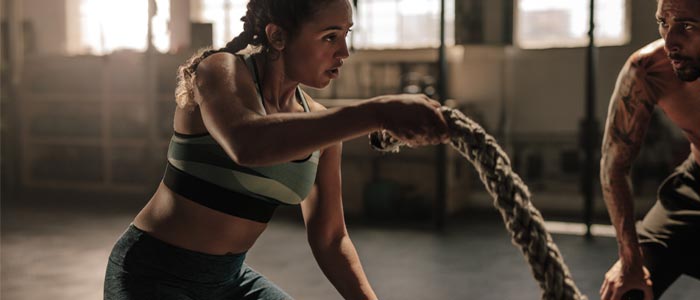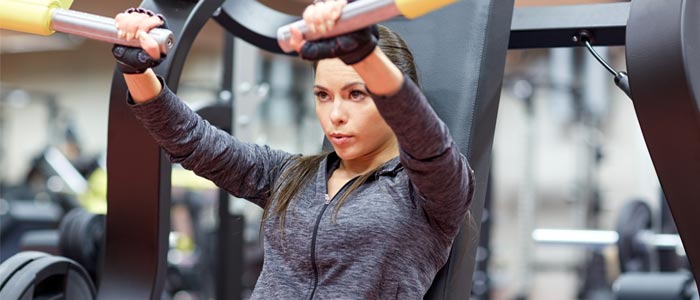The Importance of Breathing Properly During Exercise
4th Dec 19

Breathing is one of the most important things you do when exercising, whether you do it correctly or not. Believe it or not, it can really make or break your workout. Of course, there’s not that much to it, but it’s of those things that will get the better of you if you don’t know about it. So to use it to your advantage and make sure you’re getting all of the results of your workouts and keeping going full steam ahead, you need to learn how to use it to your advantage.
It’s not all black and white when it comes to exercise and breathing, either. It changes massively depending on what you’re doing. Weight training, for example, needs you to utilise all of the power you can, whereas running for 30 minutes needs you to keep going for longer. So it’s all relative, and it’s all different.
Want to move fast? Jump to the right section below.
Cardio

Starting with cardio is harder to remember since there are so many different ways to train. You have standard cardio sessions, applying moderate intensity for a moderate time, and things like LISS and HIIT mix things up completely.
Standard
For standard cardio like jogging, light cycling, or even distance rowing, you need to know how to get the most out of your workout since you’re pushing yourself and too. From a general point of view, you need to be breathing in for a couple of seconds and out for half of that. Don’t go too hard or too fast, but doing this is the best way to maintain your oxygen and carbon dioxide levels as well as your heart rate. They’re the most important factors in any cardio.
HIIT

HIIT training takes exercise up a notch, and because of the nature of the exercise, your breathing is going to be a little more intense. The thing is, though, along with the high intensity, the slower intervals are in place to help you catch some of your breath back and help maintain your o2 and CO2 levels, which is vital. Here, it’s best to breathe as you did above, but don’t hold yourself to it too much. Breathing faster than you should isn’t too much of an issue since you’re going to have a rest period, but if it helps you keep pushing, do what feels right! Also, anaerobic respiration shouldn’t be an issue.
LISS
Lastly, we have LISS. Things like slow jogging or walking, distance cycling, and anything else come from a low-intensity workout. (Check out the link here for more on LISS). Breathing during LISS exercise shouldn’t be a problem, but to get the most from the exercise and to make sure that you’re doing it right, you should be going at a pace that allows you to have the breath to talk relatively easily, but singing would be impossible. That’s the NHS guideline for moderate activity anyway, and it makes sense. If it were too easy, there wouldn’t be too much point.
Weight Training

So that’s cardio out of the way, but what about weight training. It’s completely different from cardio exercise, and that means that your breathing needs to be too. It’s all about maximising your performance after all; otherwise, you’re wasting effort. To help put things into easier understanding, it’s best to break down any exercise into the eccentric and concentric movements.
Eccentric

The eccentric movement of your weight training is where you are relaxing the muscle. You’re lowering the weight back to the starting point, and this is when you need to start on the inhalation. Breathe in as you need to and in time with your rep speed to make sure you can stay on track. Catch your breath, release the pressure and ready yourself for the next one!
Concentric

The concentric movement is the opposite altogether. This is where things get hard. When you’re exerting force, like pushing out with your chest or pulling up with your biceps, this is when you breathe out. Probably hard too. The motion takes less time, and so should the breathing. Use it to help you exert all of the power you can and make the most of your rep. This way, you’ll get the most out of your lift and generate a healthy technique too.
In a nutshell, that’s all you need to know. Your breathing varies with your exercise, so it’s essential not to be too strict. These are the general guidelines, and you can’t go too far wrong if you follow them. Practice makes perfect even with breathing, so if you’re struggling to keep in time, lower your weight or speed and improve your breathing for a while. It’s all worth it in the long run, and it’s a fundamental part of exercise.

Before beginning any exercise or nutrition program, consult your physician, doctor or other professional. This is especially important for individuals over the age of 35 or persons with pre-existing health problems. Exercise.co.uk assumes no responsibility for personal injury or property damage sustained using our advice.
If you experience dizziness, nausea, chest pain, or any other abnormal symptoms, stop the workout at once and consult a physician or doctor immediately.









